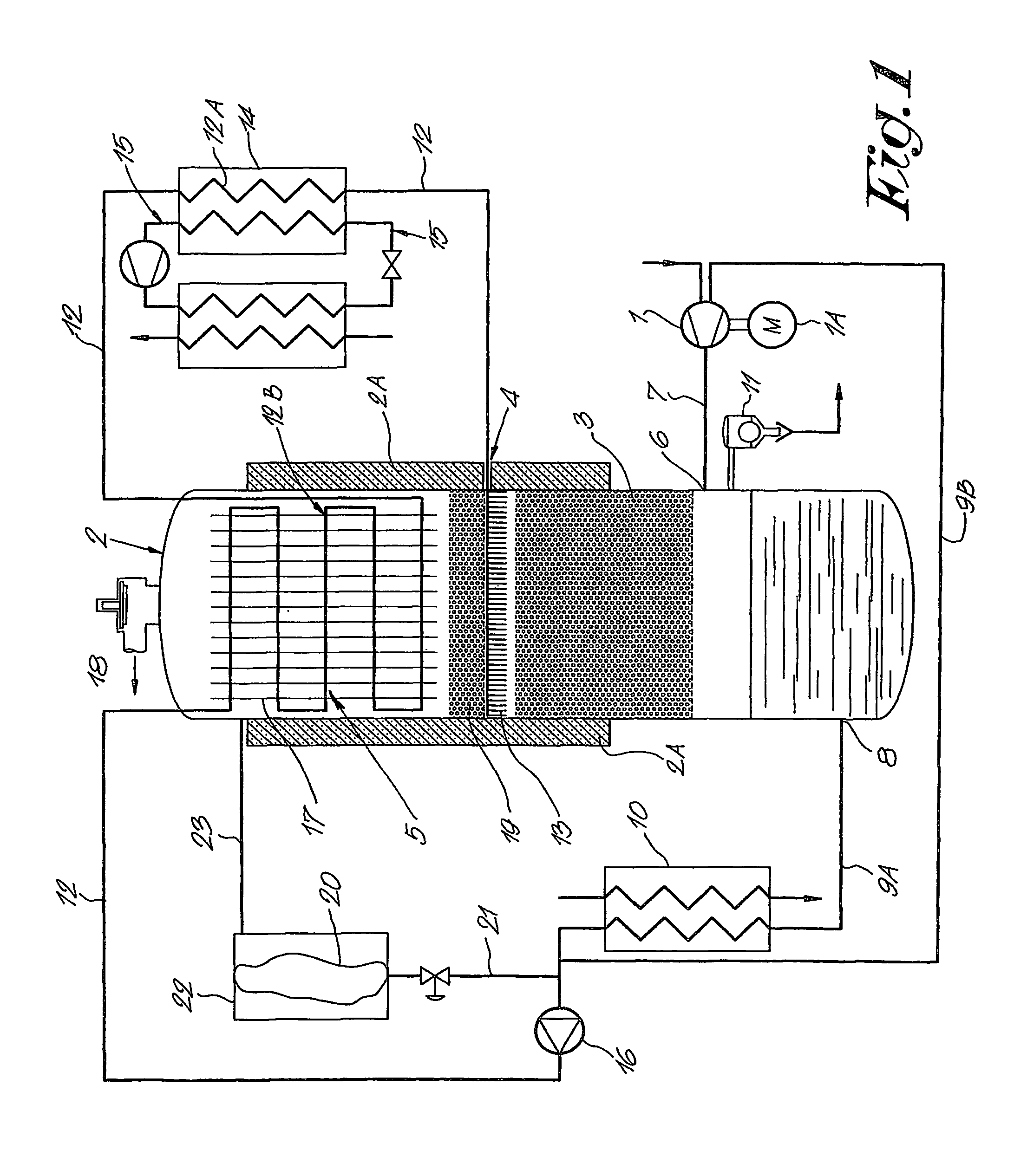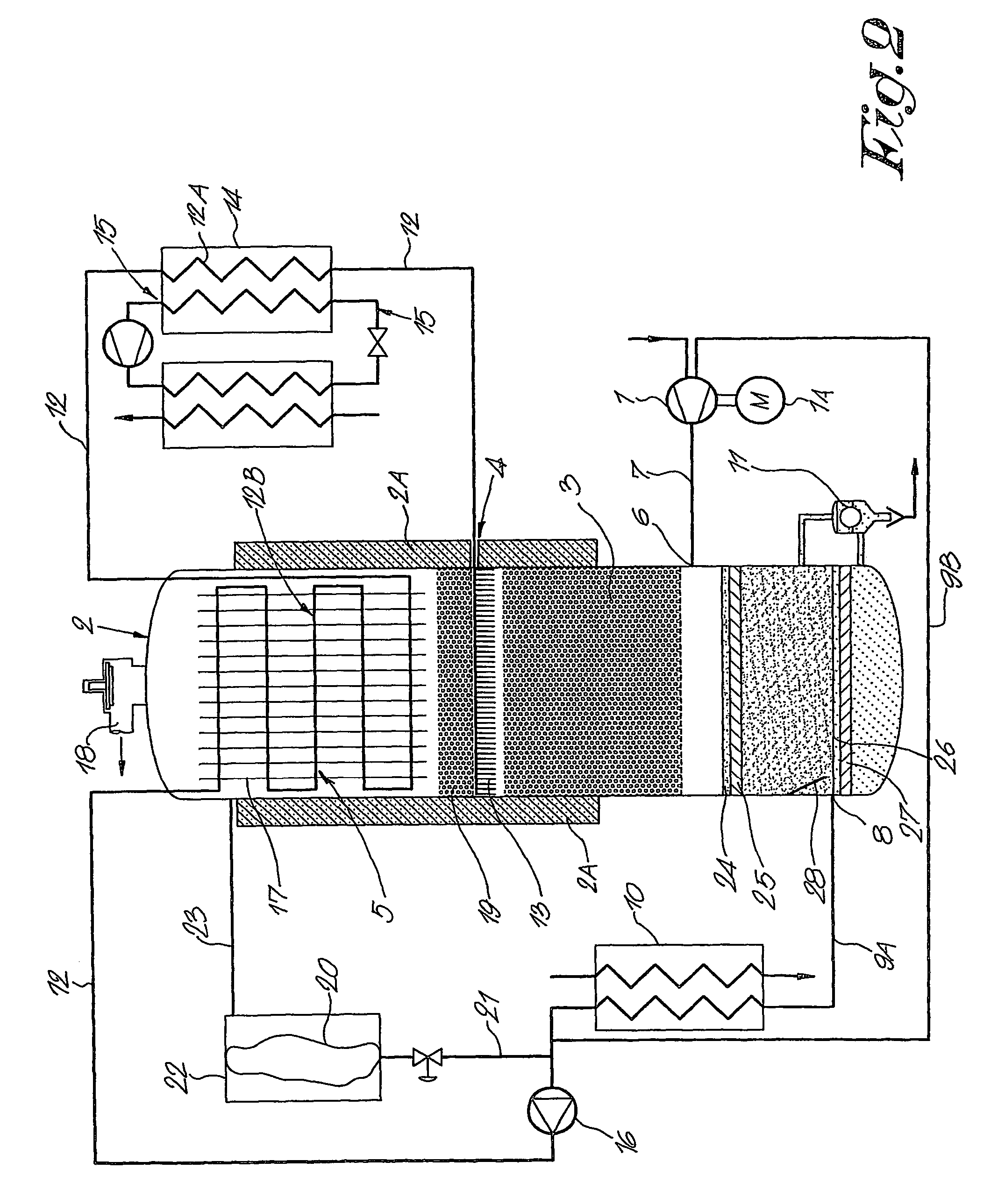Device for simultaneously cooling and removing liquid from a gas from a compressor
a technology of compressors and liquids, which is applied in the direction of heating types, separation processes, applications, etc., can solve the problems of large damage risk, inefficient heat transfer, and detrimental presence of condensate in compressed gas, and achieves simple and convenient heat transfer, further improving the effect of condensate separation
- Summary
- Abstract
- Description
- Claims
- Application Information
AI Technical Summary
Benefits of technology
Problems solved by technology
Method used
Image
Examples
Embodiment Construction
[0032]FIG. 1 represents a compressor with a screw compressor element 1, driven by a motor 1A, and a device for the cooling and liquid removal connected thereto, in particular water removal from the compressed gas, especially compressed air.
[0033]This device mainly comprises a pressure vessel 2 with insulation 2A with means in it to guarantee a direct contact between the compressed air and the cool medium, preferably water, which means consist of a contactor 3 and a water distribution device 4, and further, in the case of gas drying, also a heat exchanger 5 for re-heating the gas cooled in the contactor 3.
[0034]The pressure vessel 2 is a cylindrical, standing vessel with, at a distance above the bottom, an inlet 6 for compressed air which is connected to the outlet of the compressor element 1 by means of a compressed air line 7.
[0035]At the bottom, this pressure vessel is provided with a water drain 8 consisting of two parts 9A and 9B, with a heat exchanger 10 in between, which is co...
PUM
| Property | Measurement | Unit |
|---|---|---|
| temperature | aaaaa | aaaaa |
| temperature | aaaaa | aaaaa |
| temperature | aaaaa | aaaaa |
Abstract
Description
Claims
Application Information
 Login to View More
Login to View More - R&D
- Intellectual Property
- Life Sciences
- Materials
- Tech Scout
- Unparalleled Data Quality
- Higher Quality Content
- 60% Fewer Hallucinations
Browse by: Latest US Patents, China's latest patents, Technical Efficacy Thesaurus, Application Domain, Technology Topic, Popular Technical Reports.
© 2025 PatSnap. All rights reserved.Legal|Privacy policy|Modern Slavery Act Transparency Statement|Sitemap|About US| Contact US: help@patsnap.com



